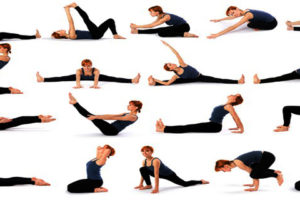This is an excerpt by canfitpro from Foundations of Professional Personal Coaching With DVD. The four components that are significant to physical health are the next! Capability is the capability of the body deliver it into the cells to take in oxygen, and put it to use in the cellular level to make energy for work. This capacity includes aerobic endurance, aerobic strength, and aerobic power. Some of the long-term adaptations of training are: enhanced increased stroke volume, decreased risk of disease, decreased heart rate and cardiac output. Muscular capacity pertains to the spectrum of muscular capability. Including muscular endurancemuscular strengthand muscular power.
Some of enhancing capacity of the long-term adaptations are increased improved endurance basal metabolic rate, strength, enhanced strength, and posture. Flexibility is the selection of amount or motion of movement that there is a joint capable of performing. Each joint has a different quantity of flexibility. Some of the long-term adaptations of flexibility are diminished risk of harm, posture bodily motions, and enhanced movement range. Body composition is the ratio of fat mass to mass. Some of body composition’s long-term adaptations are diminished risk of disease, function that was enhanced metabolic rate, and BMI. The secondary components of fitness are involved with all physical exercise and are needed for daily functioning.
Athletes experience degrees of success based upon these physical fitness components are manufactured. According to Dr Prem Jagyasi, it’s of utmost importance to realize the determinants of health, which include the full spectrum of possible influences on health. Despite amazing advancements in the health sector in recent decades, we still need to better our current knowledge about the health determinants.
Even though the primary components of physical exercise are thought to be the most crucial, we shouldn’t ignore the secondary components due to their importance in the completion of daily tasks. The secondary components include the following. Balance is the capability to maintain a specific human body position in a stationary or dynamic situation. Coordination is the capability to use all human body parts together to produce smooth and fluid movement. Agility is the capability to change direction quickly. Reaction time is the time needed to respond to a specific stimulus. Speed is the capability to move rapidly. Speed is also known as velocity. Power is the product of stamina and speed.















